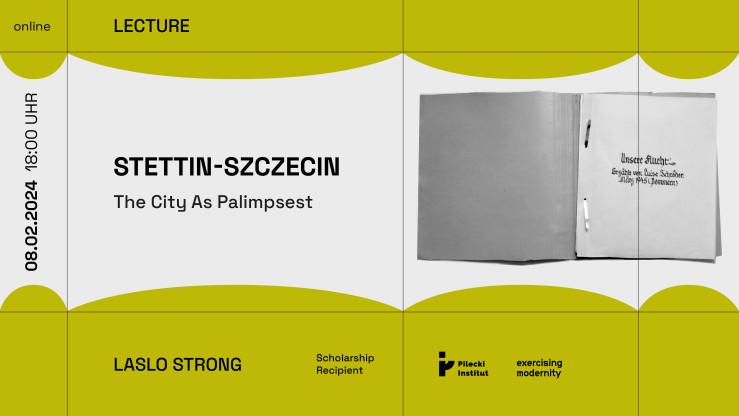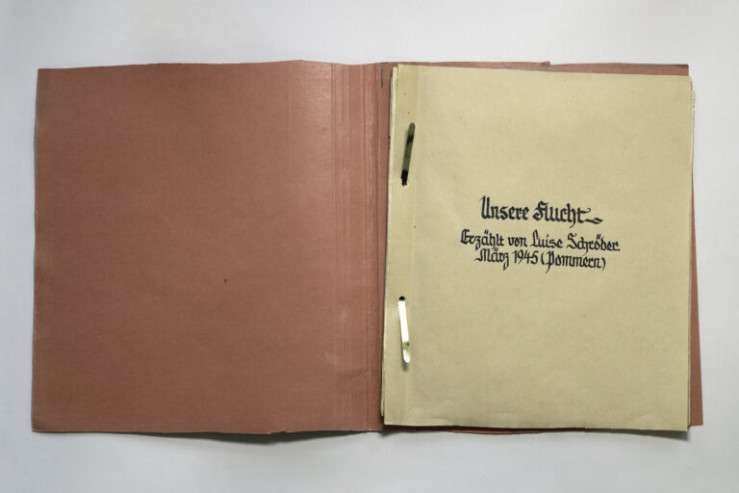Stettin-Szczecin. The City As Palimpsest - Instytut Pileckiego
08.02.2024 () 18:00
Stettin-Szczecin. The City As Palimpsest
A lecture by our Exercising Modernity scholarship holder Laslo Strong
Stettin-Szczecin
The City As Palimpsest

Unfolding a washed-out red folder, a title in Fraktur script dominates an aged sheet of paper.
08.02., 18.00 | Online via Zoom: https://zoom.us/webinar/register/WN_0TR0opmjRIGH5YNc_oOPoA
Unsere Flucht. Erzählt von Luise Schröder. März 1945 (Pommern).
[Our Escape. Written by Luise Schröder. March 1945 (Pommern)]
The appearance of these hand-drawn letters demonstrates once more the impossibility of separating the reading of a text from its visual and tactile experience. Over the past century, the Fraktur script style became a threshold to the once well-trained German readers.
Turning the page, Luise Schröder begins to tell – typed on a typewriter – about her life and work in Stettin, where she had founded a private secretary school in 1912. The essay shifts between a factual report, storytelling, gossiping, and poetic writing. One follows Luise through the streets of her more and more frequently bombed hometown, onto various means of transportation – away from the approaching Russian army. Eventually, she arrived on the very other side of the country close to the Dutch border.
While the place of Luises’ birth Stettin became Szczecin – as part of Poland – her daughter and granddaughter were rebuilding the family company in an unfamiliar town in East Frisia throughout the second half of the century. At the beginning of the 20th century – almost a hundred years after its foundation – the company finally went bankrupt.
Luise’s great-great-grandson and graphic designer Laslo Strong unfolds the archive of the former company of his family and revisits the city where it once had started. He wonders how one can read the layers of text, typography, and history today. By investigating personal and corporate documents, as well as traces in the urban landscape, the project seeks a vernacular perspective on the shared and at the same time separate history of Stettin-Szczecin.

phot. Laslo Strong’s material
Biographical note:
Laslo Strong is a graphic designer and researcher. With an interest in typography, writing, history, and technology, his work explores letterforms, editorial narratives, and experiments with everyday screens and printed matter. He has collaborated as a graphic designer on various projects in the field of architecture (Hafencity University in Hamburg) and thereby developed an interest in typography and signs within urban spaces. In recent years he rediscovered an archive of his family who were running a school for typewriting and early computer networks throughout the 20th century. Since then he is researching the history of typography in relation to his personal history. Laslo studied at the HFBK in Hamburg, Gerrit Rietveld Academy in Amsterdam (BA), and at Konstfack University in Stockholm (MA). He is a partner of the design collective Our Polite Society.